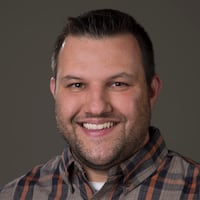Before leaving last winter to become head coach at Tulsa, Kevin Wilson was also the tight ends coach of the Buckeyes and someone who cut his coaching teach in the power offense of Randy Walker, the Troy native who built successful programs at Miami University and Northwestern.
His replacement, Brian Hartline, got into coaching under Urban Meyer, an early adopter of the spread offense Wilson helped create, and Hartline has continued in the profession under passing game guru Ryan Day.
What that means for the composition of the Ohio State offense this fall remains to be seen, but it stood to wonder if it the receivers could become even more of a focal point while the tight ends fade back into the background.
Or at least it was fair to wonder that until Hartline was asked about that very thing.
“There’s a lot of pros and cons,” he said when a reporter suggested the Buckeyes might play more “10 personnel,” or four-receiver sets, rather than what’s become their customary lineup with three receivers, a running back and a tight end (“11 personnel”). “I would say, the versatility of our tight ends and how athletic they are, they provide more of a mismatch and a variability of the complexity of which we can run offensive plays when we have them in the game.”
Whether a team wants to run the single wing, Wishbone, Full House, Run and Shoot or five-receiver spread offense, there are always pros and cons to any strategy.
Playing more receivers means a defense has to match up with more speed on the field. There is more space for the offense to exploit, too.
But to do that, the quarterback has to be able to stay upright, and that can be more challenging when a team can only keep in five or six blockers at most.
Of course, having fewer blockers also makes running the ball more difficult, and a less effective running game typically translates to less effective play-action passing.
“So I feel like we have a bigger menu of what we can do with the tight end on the field than you do with four wideouts, and we are definitely a better team by having a tight end on the field than just being with four wideouts all the time,” Hartline said. “I’m not saying we can’t have packages. I can’t say we can’t have fun with it, but any time our tight ends are on the field, it’s a bonus for the Buckeyes.”
Hartline went on to sound a lot like Wilson when he said the role of the tight end — perhaps even a second on on the field at the same time as the starter — would be determined largely by how much each man in that room can handle.
“So if a guy does get banged up, you’re not reliant on necessarily one guy being available,” Hartline said. “We have some other guys available, which is good for a team aspect. Again, that plays into the part when we get into 12 personnel. And we get down on the goal line if we want to get in 13 (three tight ends, one receiver) but you know, it does provide potential mismatches. It does provide potential information gathering. I mean, all those things are at your fingertips. Using it properly will be the key.”
And then Hartline sounded like his old coach, Jim Tressel, and offensive coordinator Jim Bollman when describing the big picture of play calling.
“Wide receiver play is only good if you can protect (the quarterback),” Hartline said. “Everything starts up front. If you can’t start up front, nothing else happens. So if you want your receivers to have really good receiver play, well then you got to make sure you have really good O-line play and really good quarterback play. It doesn’t work any other way.”
About the Author
